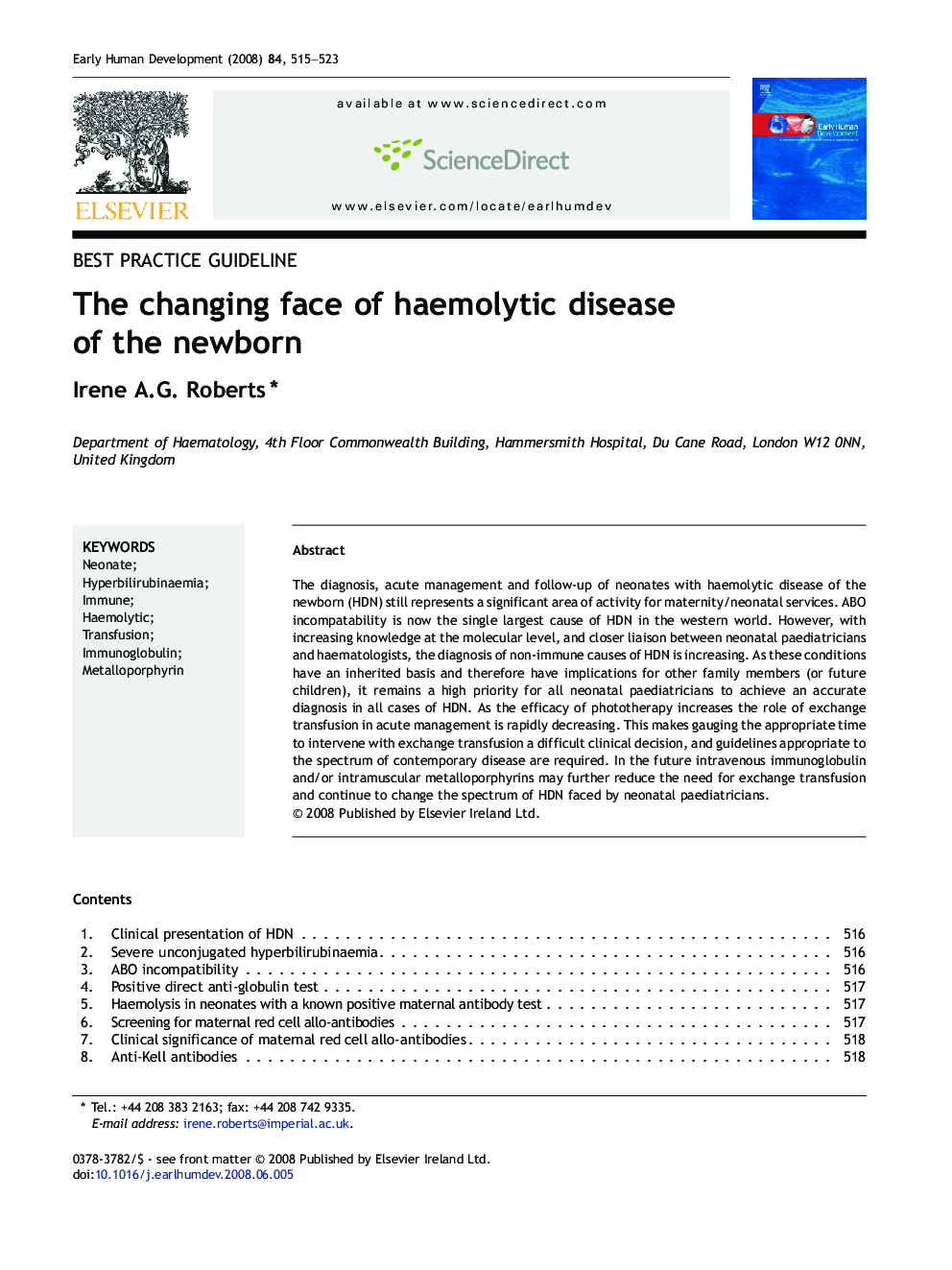| Article ID | Journal | Published Year | Pages | File Type |
|---|---|---|---|---|
| 3918190 | Early Human Development | 2008 | 9 Pages |
The diagnosis, acute management and follow-up of neonates with haemolytic disease of the newborn (HDN) still represents a significant area of activity for maternity/neonatal services. ABO incompatability is now the single largest cause of HDN in the western world. However, with increasing knowledge at the molecular level, and closer liaison between neonatal paediatricians and haematologists, the diagnosis of non-immune causes of HDN is increasing. As these conditions have an inherited basis and therefore have implications for other family members (or future children), it remains a high priority for all neonatal paediatricians to achieve an accurate diagnosis in all cases of HDN. As the efficacy of phototherapy increases the role of exchange transfusion in acute management is rapidly decreasing. This makes gauging the appropriate time to intervene with exchange transfusion a difficult clinical decision, and guidelines appropriate to the spectrum of contemporary disease are required. In the future intravenous immunoglobulin and/or intramuscular metalloporphyrins may further reduce the need for exchange transfusion and continue to change the spectrum of HDN faced by neonatal paediatricians.
